Giverny – Garten von Claude Monet
Claude Monet mietete das Haus im Jahr 1883 und legte einen farbenfrohen Ziergarten mit vielen verschiedenen Blumen an. Später erwarb er das Haus und ein weiteres Grundstück, das sich hinter der jenseits dieses Gartens verlaufenden Straße befindet. Dort entstand in den folgenden Jahren der sogenannte jardin d’eau oder Wassergarten mit dem von einer Brücke nach japanischem Vorbild überspannten Seerosenteich, der Monet sehr häufig als Motiv diente.
Mushrooms
Fly agaric – Fliegenpilz (Amanita muscaria) is generally considered poisonous, deaths from its consumption are extremely rare, and it is eaten as a food in parts of Europe, Asia, and North America after parboiling. The name of the mushroom in many European languages is thought to be derived from its use as an insecticide, when sprinkled in milk. The red-and-white spotted toadstool is a common image in many aspects of popular culture, especially in children’s books, film, garden ornaments and greeting cards.
Pear-shaped puffball – Birnenstäubling (Lycoperdon pyriforme) is a saprobic fungus and is present throughout much of the world. Emerging in autumn, this puffball is common and abundant on decaying logs of both deciduous and coniferous wood. It is considered a choice edible when still immature and the inner flesh is white.
Verdigris agaric – Grünspan Träuschling (Stropharia aeruginosa) is a medium-sized green, slimy woodland mushroom, found on lawns, mulch and woodland from spring to autumn.
Spiny puffball – Igelstäubling (Lycoperdon echinatum) has been found in Africa, Europe, Central America, and North America, where it grows on soil in deciduous woods, glades, and pastures.
Magpie Fungus – Spechttintling (Coprinopsis picacea) was first described in 1785 by French mycologist Jean Baptiste François Pierre Bulliard.
Schloss Wolfsgarten, Langen (Hesse)
Schloss Wolfsgarten was a former hunting lodge of the ruling family of Hesse-Darmstadt and was established between 1722 and 1724 by Landgrave Ernst Ludwig of Hesse-Darmstadt. From 1879, Wolfsgarten became a favorite country retreat for Grand Dukes Ludwig IV and his son Ernst Ludwig.
In the 20th century, Grand Duke Ernst Ludwig extensively modernised Schloss Wolfsgarten and rearranged the park. In 1918, after the abolition of the monarchy, Wolfsgarten became the principal residence of the former grand ducal family. Today, the Wolfsgarten is the property of the Hessian House Foundation and is open to the public only on two weekends in May during the annual Rhododendrenblüte.
Fern and clover
Day 2 – 02.08.2011 – Oban – Port Appin – Glencoe – Gualachulain (99km)
Have Fun!
It’s spring time! :-)
It is spring time and flowers are everywhere…
Crocus are one of the first flowers to bloom in spring and are very popular for gardens and parks. Crocus flowers and and their leaves are protected from frost by a waxy cuticle, so it’s common to see early-flowering crocus blooming through the last spring snowfall.
Duthie Park, Aberdeen
Duthie Park is situated in Ferryhill, Aberdeen (Scotland), by the banks of the River Dee. The land was gifted to the council by Lady Elizabeth Duthie of Ruthrieston in the year 1881. Her idea was to create a memory for her uncle and her brother.
The winter gardens are the home for the second largest collections of bromeliads and of giant cacti respectively in Great Britain.
Duthie Park
Duthie Park is situated in Ferryhill, Aberdeen (Scotland), by the banks of the River Dee. The land was gifted to the council by Lady Elizabeth Duthie of Ruthrieston in the year 1881. Her idea was to create a memory for her uncle and her brother.
The winter gardens are the home for the second largest collections of bromeliads and of giant cacti respectively in Great Britain.
